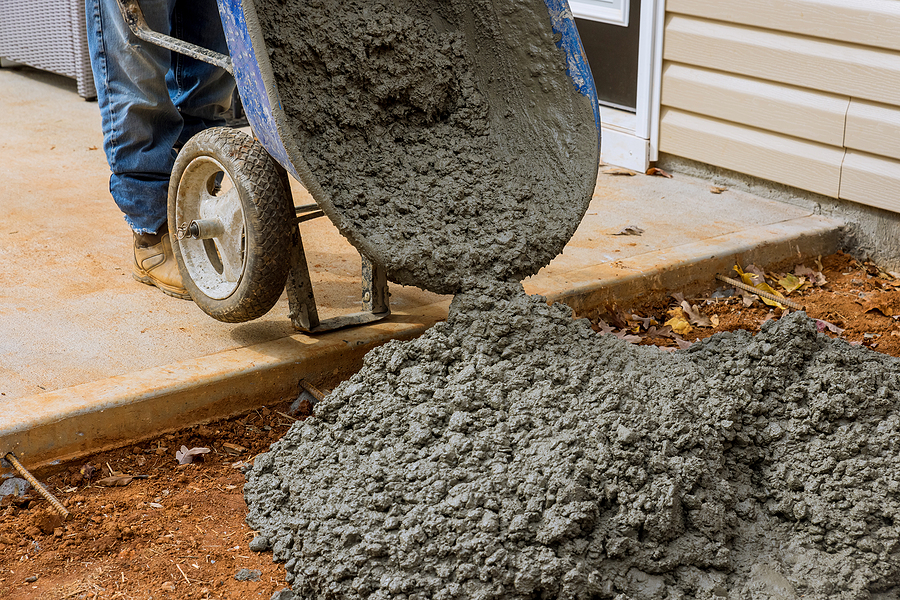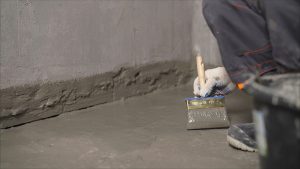When it comes to building or upgrading a structure with concrete floors, there’s more going on beneath the surface than most people realize. Concrete is incredibly durable and versatile, but it’s also porous. That means it can absorb moisture from the ground, causing a host of expensive and frustrating problems over time.
Enter vapor retarder systems, a crucial but often overlooked part of concrete construction and finishing. If you’re investing in new floors or prepping for concrete floor polishing, a vapor retarder can mean the difference between long-term performance and costly repairs.
So, what exactly is a vapor retarder system? Why is it so important? And how does it tie into polished concrete floors? Let’s break it all down.
What Is a Vapor Retarder System?
A vapor retarder (sometimes called a vapor barrier, though they’re technically a bit different) is a material—usually a sheet of polyethylene plastic—that’s placed underneath a concrete slab to prevent moisture from migrating upward from the ground. It acts like a shield, blocking water vapor before it can seep into the slab and compromise the surface or any flooring materials applied on top.
Vapor retarder systems are especially critical in areas with high groundwater levels or fluctuating humidity. Without one, water vapor from the soil can rise through the concrete via capillary action, eventually damaging flooring finishes, adhesives, and even the concrete itself.
In simple terms, a vapor retarder protects your floors from invisible moisture that can do very real damage.
Why Moisture Matters in Concrete Floors
Moisture may not seem like a big deal—after all, concrete looks and feels solid. But because it’s porous, it acts like a sponge, slowly absorbing water vapor from the ground. That moisture can lead to a range of issues, such as:
- Surface staining and discoloration
- Delamination of coatings or adhesives
- Mold and mildew growth under the flooring
- Cracking, curling, and structural weakening
If you’re planning to install any kind of finish, especially concrete floor polishing, moisture matters. A polished floor may look flawless on day one, but over time, moisture underneath can cause unsightly blemishes or, worse, structural problems that require grinding, resealing, or even full removal.
This is where a vapor retarder for concrete floors earns its keep. It reduces moisture migration, stabilizes the slab, and extends the lifespan of whatever surface treatment you apply.
The Connection Between Vapor Retarders and Polished Concrete
Polished concrete is popular in both commercial and residential spaces for its sleek appearance, low maintenance, and excellent durability. But achieving that polished finish requires a surface that is dry, stable, and free of moisture-related blemishes.
If a vapor retarder for concrete floors wasn’t installed, or was installed incorrectly, moisture can rise from beneath and interfere with the polishing process. It can cause discoloration, dull areas, or bubbling under sealants.
Even after polishing is complete, ongoing moisture can impact shine and hardness. Over time, it may even lead to the breakdown of densifiers or guard products applied during the final stages of concrete floor polishing.
In short: no matter how well your polishing is done, it won’t last if your slab is fighting hidden moisture from below.
Best Practices for Installing Vapor Retarder Systems
Like anything in construction, it’s not just about having a vapor retarder—it’s about installing it correctly. A poorly installed system won’t do its job, and that can be just as problematic (if not worse) than having none at all.
Here are a few basic guidelines:
Choose the Right Material
Vapor retarders typically range from 10 to 20 mil in thickness. Thicker materials offer better durability and puncture resistance during construction.
Seal All Seams and Penetrations
Taping seams and sealing around plumbing or electrical penetrations is essential to prevent gaps that allow vapor to sneak through.
Place It Below the Slab But Above the Subgrade or Base
This positioning ensures maximum moisture protection without compromising structural support.
Protect the Membrane During Slab Pour
Walking or dragging tools over the vapor retarder during concrete placement can cause tears. If damage occurs, patch it immediately.
Consulting with experienced contractors or specialists can ensure that your vapor retarder systems are installed properly and provide long-lasting protection.
Retrofitting and Repairs: What If My Floor Doesn’t Have a Vapor Retarder?
If you’re dealing with an existing concrete slab that doesn’t have a vapor retarder underneath, you still have options—but they’re a bit more limited.
Surface-applied moisture barriers and sealers can help reduce vapor transmission in some cases, especially if you’re prepping for concrete floor polishing. These products are often rolled or sprayed on and can form a breathable barrier that minimizes moisture movement.
However, retroactive solutions don’t always perform as well as full vapor retarder systems installed below the slab. They’re best used as stop-gap measures or in conjunction with other surface treatments. For high-moisture environments or high-performance floors, a new slab with a proper vapor retarder may be the better long-term investment.
The Real Value of a Vapor Retarder System
A lot of the value in construction comes down to what you don’t see. When a floor stays level, dry, and pristine for years, it’s easy to forget how much thought and planning went into making that happen.
But make no mistake, a good vapor retarder system is a behind-the-scenes hero. It ensures that your floors, whether polished, coated, or tiled, remain intact and attractive for the long haul. It prevents callbacks, warranty claims, and frustrating repairs that cost time and money. And most importantly, it protects the investment you’ve made in your space—whether that’s a home, office, warehouse, or retail store.
Concrete is one of the most durable flooring options out there, but it’s only as strong as the system supporting it. That’s why vapor retarder systems matter. Whether you’re pouring a new slab or prepping for concrete floor polishing, don’t skip this step. Moisture-related damage can creep in slowly and cost you big later.
A properly installed vapor retarder for concrete floors doesn’t just protect your surface—it protects your time, your money, and your peace of mind. And if you’re aiming for that sleek, long-lasting polished concrete look, moisture control is essential.
Ready to Protect Your Floors From the Ground Up?
At Custom Concrete Prep & Polish, we combine expert vapor protection with top-tier concrete floor polishing to give you floors that perform as well as they look. Whether you’re starting from scratch or enhancing an existing space, we’ll help you find the ideal vapor retarder solution for your specific needs.
Contact us today to schedule a consultation or learn more about our services. Your floors—and your future self—will thank you.



